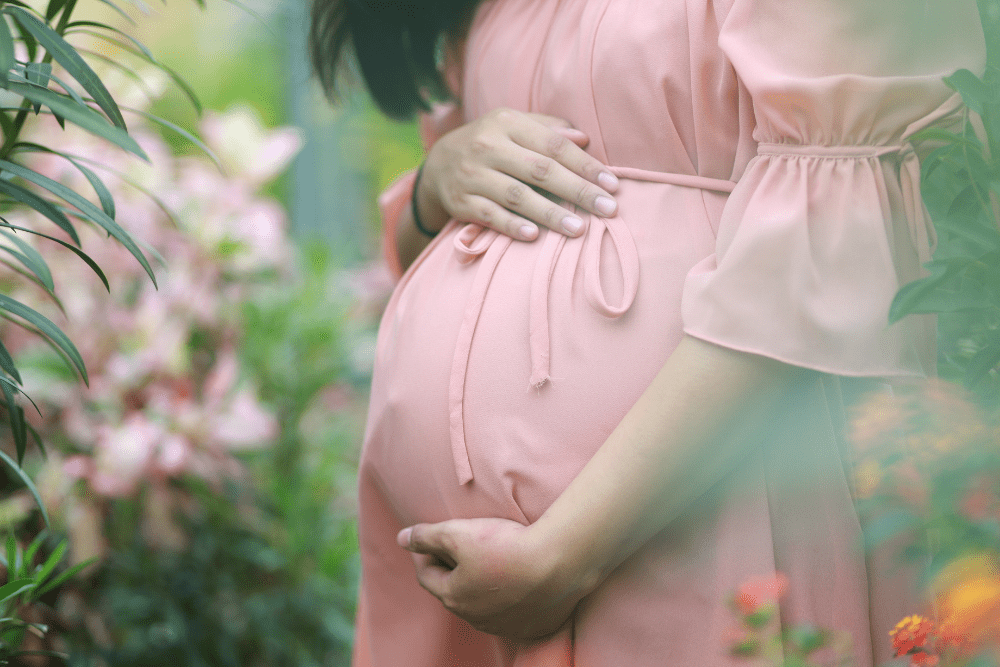
Rituals and ceremonies flourish in every culture and have done so throughout history. Perhaps the two most ritual-inspiring events are birth and death. These events have seeped into culture, mysticism, religion and local custom.
Rituals for the promotion of labour abound the world over! Some tribes in Central Africa believe sexual embarrassment of the pregnant woman will promote labour and customs include the father of the baby exposing his genitalia to her. In parts of Jamaica, it is customary to promote labour by giving a pregnant woman a sweaty shirt to smell. In parts of India, a jar of grain is broken in front of a heavily pregnant woman. This is in the belief that she will see the grain spill before her and her body will respond likewise.
Ancient Egyptians also incorporated rituals and ceremonies as an integral part of the pregnancy and birth experience. Meskhenet was a Goddess associated with the place of birth, and respect for her was essential for normal birth. These women also held a great fear of blood, especially blood associated with menstruation and childbirth. Thus, they performed ritual cleansings of the mother and baby after birth.
Around the world, one of the more prolific birth-related rituals involves the placenta. If we think blood has negative connotations for people today, the placenta conjures associations that are even more off-putting. For most women giving birth in a hospital in Australia, the placenta is a mere afterthought, and many do not even see it at all. The disposal of the placenta is part of the ritual for staff in these settings, the ritual of cleaning up and disposing of birth’s waste. In a home birth environment, considering that placenta waste is almost unheard of, the placenta is given respect and ceremony, be that through its burial in the yard, honouring it through art, or valuing its healing properties by consuming it.
The placenta is given so much power in various parts of the world. The rituals associated with it can mean the difference between life or death for a newborn and his/her family or village. The mythology surrounding the placenta brings ritual and ceremony to the fore of the birth experience in many cultures. In Northern Sumatra for example, local mythology holds that in the placenta lests one of seven souls the newborn child possesses, so great care and respect is taken in its treatment.
For women in Hungary who wanted no more children, it was customary to burn the placenta. After that, they will place the ashes in their husband’s drinks. On the other hand, in Japanese culture it was believed eating the placenta would increase a woman’s fertility. In Austria and parts of Italy, it was believed that the blood of a fresh placenta held great medicinal properties. Everything from the removal of birthmarks to the cure for epilepsy.
Placenta burial is common among home birth experiences in Australia. I have heard many women say this practice respects the placenta as a life-giving organ, and burial respects that by allowing it to enhance the life of another living organism. Placenta burial is a common ritual for many cultures. The mythology behind these practices can include the belief that evil spirits can enter the home or village of a newborn child through the placenta. That’s why they quickly buried it to reduce this risk. Some cultures like some Native Hawaiian, Navajo and Maori tribes believe by burying the placenta in the homeland, the child is bound to the land and his/her ancestral heritage. In Thai culture, the placenta is salted, jarred and buried under a tree that corresponds to the symbol of the Asian year of the child’s birth.
Lotus birth too forms part of a ritual and ceremony, with many believing the spiritual connection between the placenta and the baby should not be artificially broken. Indeed, among the Kikuyu in Kenya, the placenta and the umbilical cord are believed to symbolise the attachment of the child to the mother and its roots in traditional society. Many of the women I have spoken with about lotus birth experiences have mentioned the moment the umbilical cord separated the baby and the placenta. Each of these women remembered that moment, and it seemed to be an impromptu ceremony of sorts, symbolising the end of the baby’s transition from her body and into the world.
Another of the rituals associated with birth in the West is the swaddling or wrapping of newborns, said to make them feel secure. This practice dates back to the second millennium BC in Egypt, where they swaddled infants to protect them from malevolent spirits, the swaddling disguised the baby as mummified, to fool the evil spirits that lurked in the neighbourhood after the birth of a baby. The wrapping also symbolised the god Ptah, a God of protection and healing. In the Tudor period in England, traditional Catholicism encouraged the practice of classing the child after swaddling and sprinkling it with protective salt.
Throughout The World
For many of us living in Australia, the idea of enacting rituals as part of an ordinary pregnancy and birth may sound strange. This is because as we are often removed from spiritualising our experiences, modern pregnancies, labours and births, however, are filled with ritualised encounters. While these encounters can enrich our experiences, taking a closer look can help us understand the underlying ideologies and cultural messages these rituals convey. As part of my PhD research into home birth experiences in Australia, the rituals undertaken by women and families are of great interest to me, and one of the first many undertake is the pregnancy test.
The modern pregnancy test symbolises more than just ‘proof’ of pregnancy. Some tests, for whatever reason, we are happy to undertake, and others we decline, irrespective of the reason, undergoing testing involves being part of a bigger belief system and ideology. For most of the women I have met during my research, doing a pregnancy test comes with a disclaimer. ‘I already knew I was pregnant…but I did the test to be sure.” This ritual legitimises pregnancy in our culture. But it also reinforces an ideological message that says you cannot trust your own body. Its messages may not be ‘real’, while a medical test, however, can tell you the truth. Tests give clear-cut answers and trusting test results of all kinds accustomed to us. Trusting that doing them provides the kinds of answers we can listen to.
It is not all cynical though, I am sure many of you can recall looking at that positive pregnancy test for the first time. The myriad of emotions swells through your body. I can still remember the heart palpitations and cold sweat I had when looking at my first positive pregnancy test. I was terrified! And elated, excited, giddy and amazed. What is interesting is that until I took that test, all I felt was nauseous. The ritual of the pregnancy test provided me with a means to experience my body in a new way.
Rituals, whether positive or negative, impact our experiences. They have the power to do this because of the mythology imbued within them. If I gave no power to my pregnancy test and regarded it as useless, not only would the positive result mean nothing to me, but I probably would not have used one in the first place. Some of the women I have spoken with about their experiences did not use a pregnancy test. Instead, they trusted the messages they were getting from their bodies.
While the pregnancy test is a contemporary Western example of ritual, it is not hard to imagine the fear associated with blood in ancient Egypt. Today one of the most popular questions asked of home-birthing women is, ‘but what about the mess?’. Blood, especially women’s blood, is still taboo in Western culture, a classic symbol of pollution. Cleaning or the disposal of blood and birth by-product is also a ritual. It symbolises the return to order, and the abating of anxiety around disease, filth and of course death.
Rituals and ceremonies form an integral part of pregnancy and birth. They anchor our bodies and our experiences to a ‘bigger picture: usually the cultural beliefs and values behind the rituals in question, it is easy to take for granted the rituals and ceremonies of Australian life, because we are a part of them every day. We can learn a lot about our core values by the enactment of our deepest belief systems through ritual, and connect ourselves with our histories, ancestors and the line of women who came before us.
Page revised on 13th December 2021

 Wish List
Wish List
Hi Emily,
What a wonderful article! Thank you for your insights.
I was wondering in your research if you came across any ritual or ceremony that celebrated the act of giving birth?
Thank you for your message.
I found this article interesting about rituals that midwives may follow during a birth (perhaps particularly a homebirth). Birthing practices such as Lotus birth also form a ritual as well as chants and songs in birth. I wonder if each mother makes her own rituals, if given the support and time to do so.